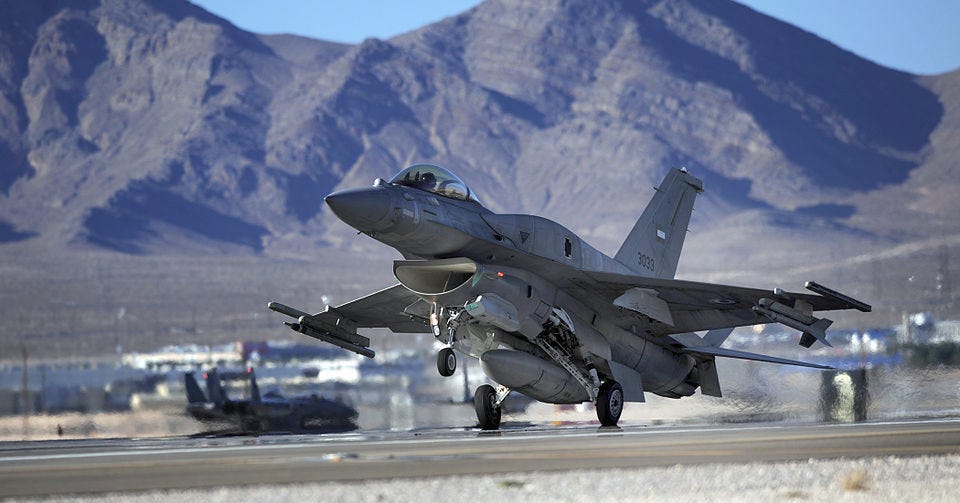How Did the Emirates End Up with the World's Best F-16s?
Embarrassed in 1986, Abu Dhabi was determined to defend itself
by PAUL IDDON
In a brief and largely forgotten episode of the Iran-Iraq War, Iranian warplanes attacked Emirati oilfields off the coast of the United Arab Emirates’ capital, Abu Dhabi.
Stunned by its utter powerlessness in the face of that strike, the UAE set to work building a military in the ensuing decades so that it would not find itself in such a vulnerable position again. For a while, it even operated the world’s best Lockheed Martin F-16 fighters.
On Nov. 25, 1986, air-launched missiles struck two oil platforms, 100 miles from the Emirati capital. The missiles hit the production unit of one platform and the living quarters of the other, killing five and injuring at least 24. Abu Dhabi only acknowledged that a lone “foreign aircraft” executed the deadly attack.
The following month, investigative journalists Jack Anderson and Dale Van Atta reported that the Emirati government had no doubt Iran carried out the attack—the deadliest against a noncombatant state in the eight-year Iran-Iraq War. However, Abu Dhabi felt powerless to do anything about it.
Keep reading with a 7-day free trial
Subscribe to Trench Art to keep reading this post and get 7 days of free access to the full post archives.





